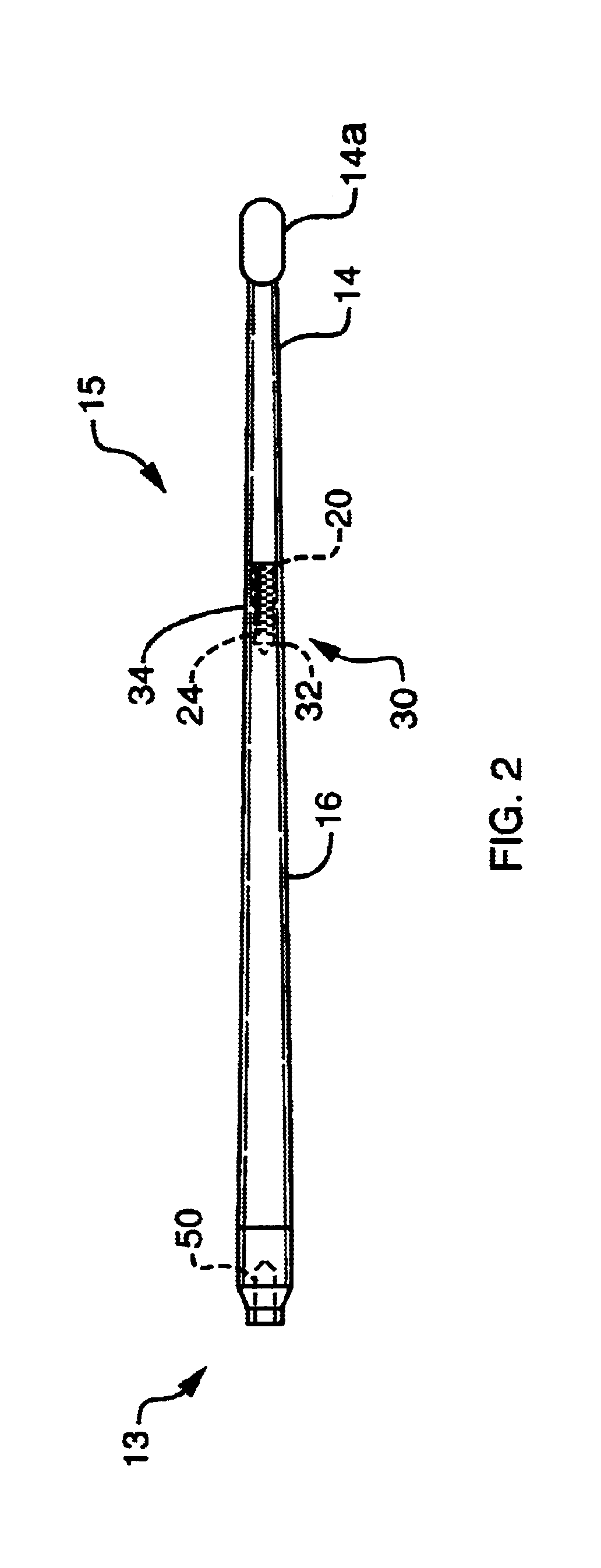Curette with detachable tip
a curette and tip technology, applied in the field of curettes, can solve the problems of reducing the useful life of the working tool member, increasing the overall cost of the tool, and requiring a large amount of manufacturing, so as to achieve the effect of reducing the cost of replacement, reducing the cost of manufacturing, and being easy to apply
- Summary
- Abstract
- Description
- Claims
- Application Information
AI Technical Summary
Benefits of technology
Problems solved by technology
Method used
Image
Examples
Embodiment Construction
[0017]Referring to FIG. 1, a curette 10 includes a working tool member 12 that consists of a detachable tip 14 and a shaft 16. The tip 14 and shaft 16 connect together at mating ends 15 and 17, and a handle 20 detachably or permanently attaches to an opposite, or proximal, end 13 of the working tool member 12. The tip 14 may have a working end 14a that is shaped as a scoop, as shown in FIG. 2. Alternatively, the working end 14a may have various other shapes that are common to curettes, some of which are depicted in FIGS. 3 and 5.
[0018]Referring also to FIGS. 2-5, the mating end 15 of the tip 14 includes a threaded section 20 and an elongated end 24 that is flattened on at least one side 26. The elongated end may also may be flattened on additional sides 26, as depicted in FIG. 5. Preferably, there is a slight gap between the threads 22 and the start of the flattened portions 26 which extend to the outer end of the section 24. The mating, or distal, end 17 of the shaft 16 includes a ...
PUM
 Login to View More
Login to View More Abstract
Description
Claims
Application Information
 Login to View More
Login to View More - R&D
- Intellectual Property
- Life Sciences
- Materials
- Tech Scout
- Unparalleled Data Quality
- Higher Quality Content
- 60% Fewer Hallucinations
Browse by: Latest US Patents, China's latest patents, Technical Efficacy Thesaurus, Application Domain, Technology Topic, Popular Technical Reports.
© 2025 PatSnap. All rights reserved.Legal|Privacy policy|Modern Slavery Act Transparency Statement|Sitemap|About US| Contact US: help@patsnap.com



